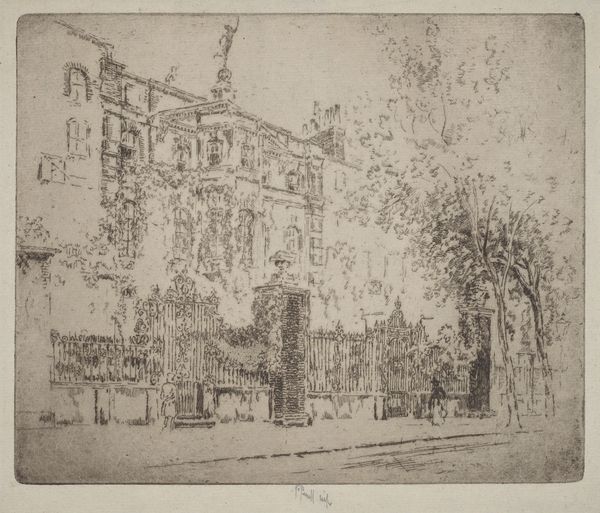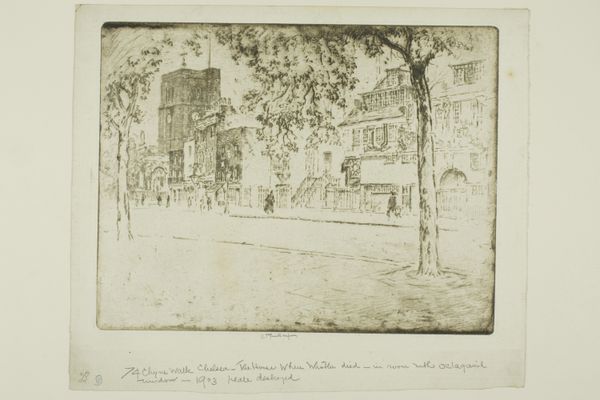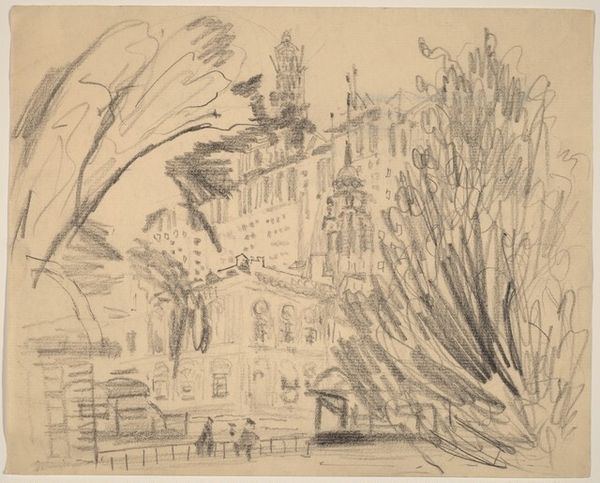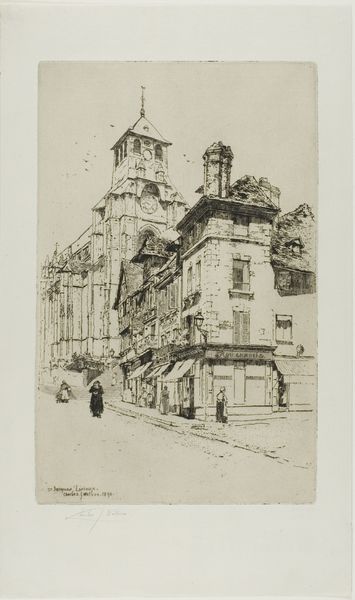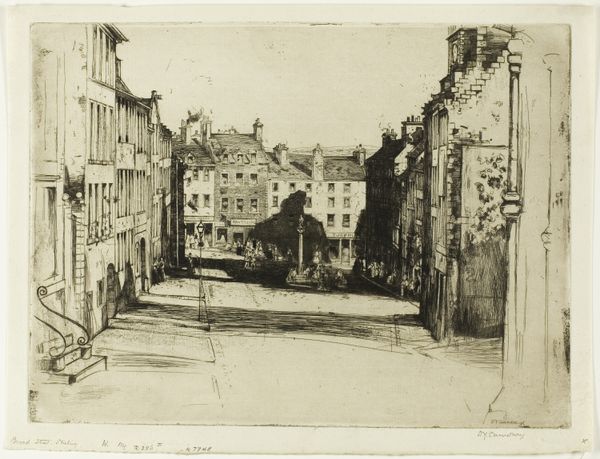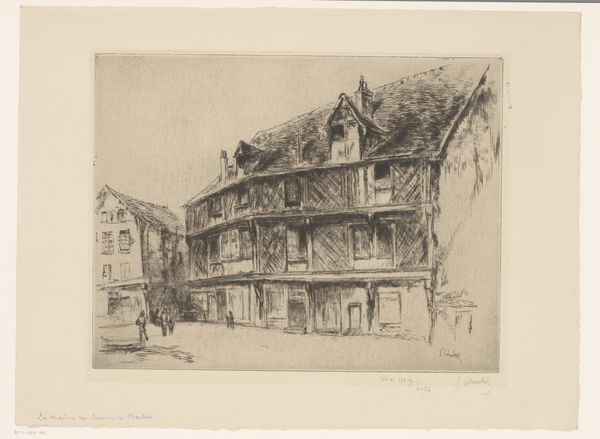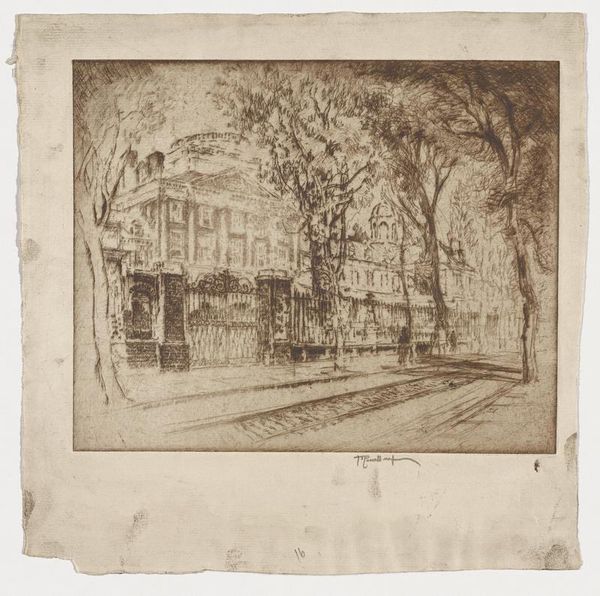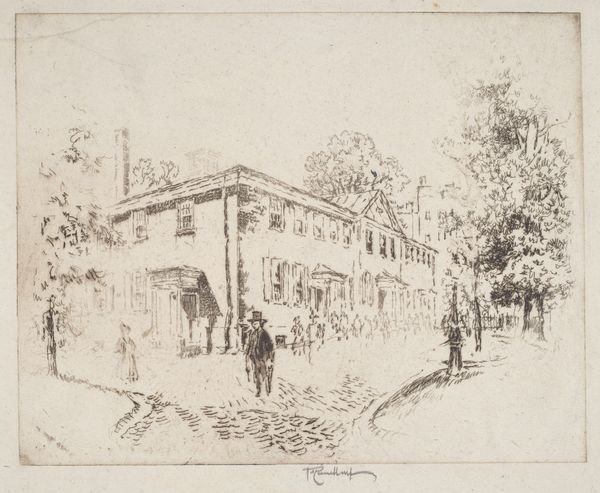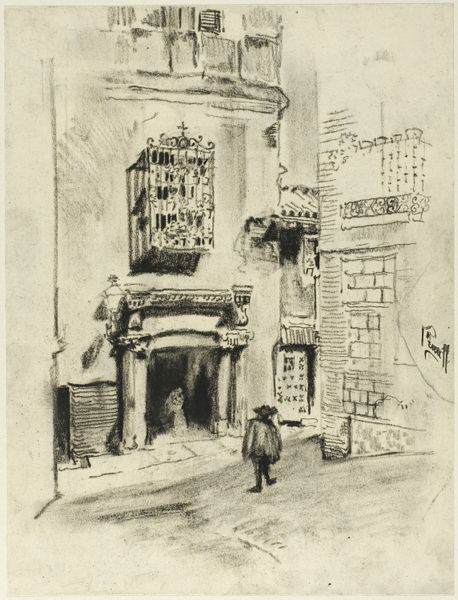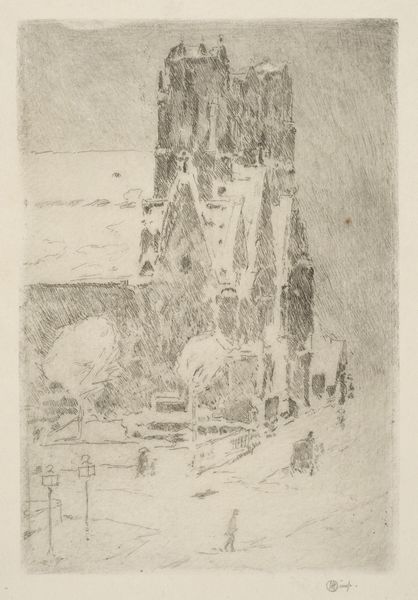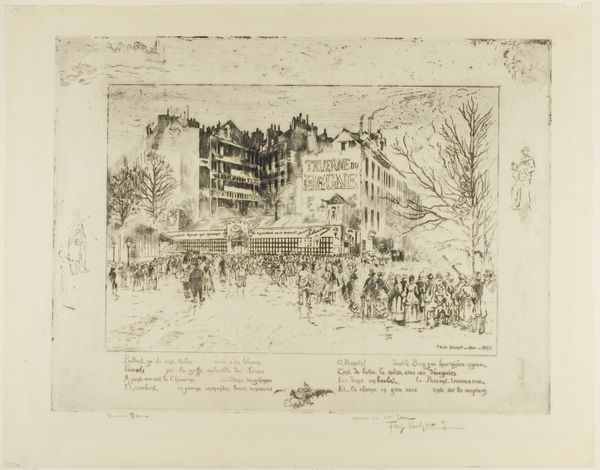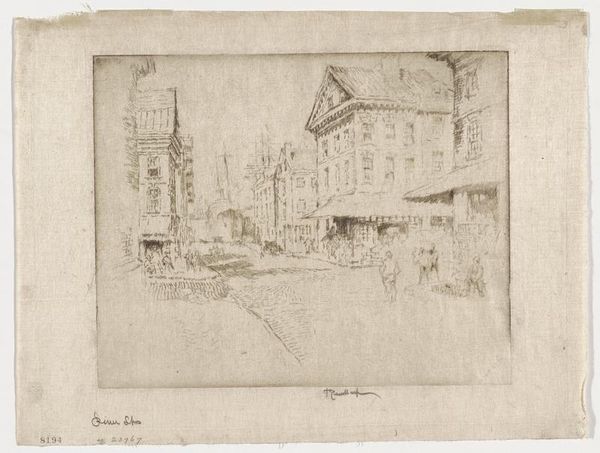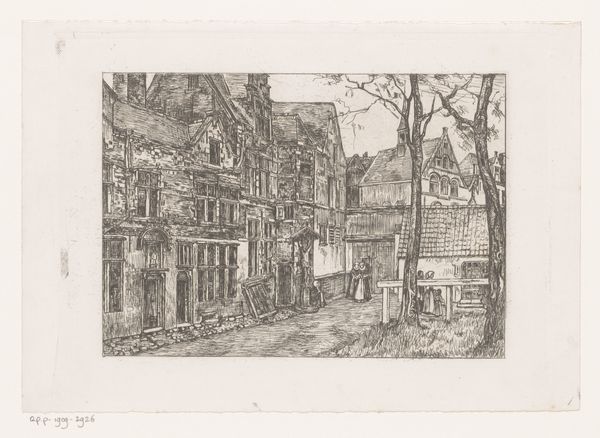
drawing, print, etching, paper
#
drawing
# print
#
etching
#
landscape
#
etching
#
paper
#
cityscape
Dimensions: 208 × 266 mm (image); 271 × 323 (sheet)
Copyright: Public Domain
Curator: Here we have Joseph Pennell's 1906 etching, "Rossetti's House." It's a study in architectural portraiture, if you will. Editor: It feels ghostly, doesn’t it? All shimmering lines and veiled impressions, like a memory of a place fading into the fog. Curator: Precisely. Pennell was deeply interested in the etching process, almost fetishistic about it, you might say. The quality of the paper, the bite of the acid on the plate. Editor: Well, you can see that love of process in the final result. The etched lines themselves seem almost ephemeral. What do you think he wanted to convey, material-wise, beyond the image itself? Curator: A tension, perhaps. Look at how he renders the wrought iron gates versus the solid structure of the house behind it. Delicate yet sturdy. Memory is fragile, architecture usually intends on permanence. Editor: But it's titled “Rossetti’s House,” a house belonging to an artist, implying an intellectual or emotional life within those brick walls. So we see both private sentiment and grand edifice coexisting, equally exposed through Pennell's etching skills. Curator: And consider the social context. 1906, London was rapidly changing. Old buildings were being demolished to make way for the new. Maybe he’s making a commentary on artistic legacy—who remembers the house now? Editor: An elegy etched in acid, a fitting end. I mean beginning. Rossetti himself must have sensed he was standing in the sands of time. Pennell helps us glimpse his awareness. It makes me question how the act of destruction gives new dimension to places we inhabit, especially domestic spaces where we become intimately and unselfconsciously alive. Curator: And Joseph Pennell captured all of it, transformed mundane material – paper, ink, acid, and metal – into something lasting, poignant, an etching on the memory as much as on the page. Editor: He did. Makes you think differently about the built environment. What remains, what fades.
Comments
No comments
Be the first to comment and join the conversation on the ultimate creative platform.
